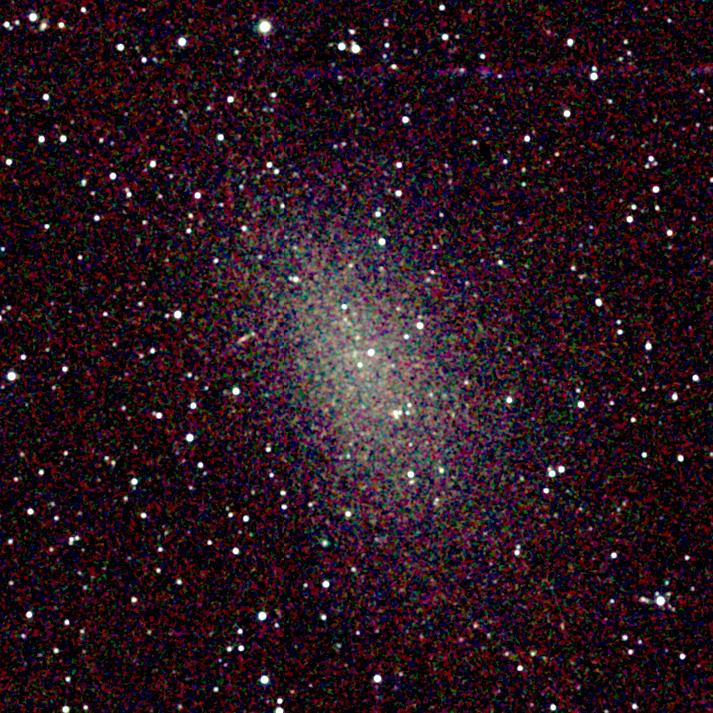Ann wrote: ↑Thu Aug 04, 2022 7:44 am
sym666 wrote: ↑Thu Aug 04, 2022 7:35 am
I wonder how the sky would look like from an hypothetical planet orbiting one of the star near the center, where, as the caption says, there are some a 100 stars in 3 light years.
Maybe it would look something like this?
Explanation: The brilliant light at lower right is the crowded center of 47 Tuc, and the bright but fainter light at upper left is another, nearby globular cluster, whose designation I'm too lazy to google now. The reddish, brownish "veins" seen in the left part of the image are dust lanes in the background Milky Way. Not sure you would see the Milky Way from inside a globular cluster, though!
Ann
I think it could be in the ballpark. In the article I quoted, the author tough, says that it could be a countinous sort of "grainy" (because of the incredible amount of visible stars) twilight, so maybe the background should be brighter instead of the pitch black we are used to:
"At the center, our planet would be surrounded by a few hundred stars per cubic light-year (several thousand stars per cubic pc), which is thousands of times the stellar density of the Sun's neighborhood in the Milky Way's suburbs. The typical distance from our hypothetical planet to the closest star, however, still would be substantial — about 0.05 light-year (0.015 pc). In our solar system, this would place it beyond the inner edge of the Oort Cloud of comets.
Unless the closest stars happen to be red giants, none of them would have angular diameters large enough to resolve with the human eye, so all the stars still would appear as points of light. Across the entire sky, inhabitants of our hypothetical world would see 10,000 stars brighter than 1st magnitude — compared with just 29 in Earth's sky — and more than a thousand brighter than Earth's most brilliant nighttime star, Sirius. The brightest suns would blaze at apparent magnitudes brighter than –9, or 100 times more luminous than Venus appears from Earth. More than 130,000 stars would shine brighter than 6th magnitude, the naked-eye limit, compared with 6,000 from Earth.
Although it might sound like lots of empty space still exists at the cluster's center, the prospects for doing astronomy from there would be discouraging. The biggest problem would be the sheer amount of light from all those stars. The cluster's suns would combine to give an average sky brightness some 20 times brighter than Earth's night sky at Full Moon (or about 16.7 magnitudes per square arcsecond). In other words, the darkest night our viewers would ever see would be a strange sort of twilight that possesses a kind of grainy texture unlike the uniform sheet of light we see on Earth. The galaxy's disk — already hard to see from Earth at Full Moon except from isolated locations — would be visible in the background but hard to study. Astronomers on our hypothetical planet likely would favor telescopes with small fields of view and excellent baffling against scattered light."
Very interesting anyway, thanks for your insight!

P.S.: Is your picture located in a accessible site?...Disregard that, I found it!
 M13: The Great Globular Cluster in Hercules
M13: The Great Globular Cluster in Hercules




